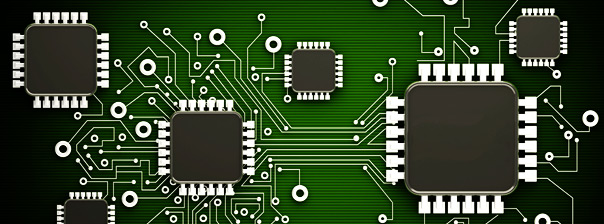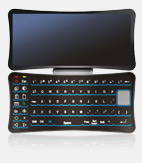| |
|
Electronic Design
Embedded Software
Product Engineering
|
|
|
| |
 |
| From the MD's desk |
| |
 |
I once owed a friend a 1000 dollars and it was my time to start returning the money. I didn't have the money so I convinced him that I would pay him a dollar every day for the next 1000 days and then stop paying no matter what. And he agreed. I started paying him but soon realized that my payment would fall short or be in excess of a few cents everyday. After 10 days I had managed to repay only 8 dollars. "Ha!", he exclaimed, "You're short by 20%. |
I'm worried that with such a large error, after 1000 days, you would end up paying me too low – like about 800 dollars!" I asked him to bear patience and trust my knowledge of statistics. After 100 days I had managed 91 dollars. "Well", I said, "Now I'm short by only 9%." Days passed and my random payments continued. After 1000 days I had paid him a total of 972 dollars. "So here we are", I concluded, "I'm short by only 2.8%. And the pizza is on me. That makes us even."
And my friend walked away happily.
The above principle also works in the measurement world. When meters (for example energy meters or mass flow meters) measure and aggregate, individual measurements may be way off (noisy) – sometimes with an error as high as +/-200%, however as the aggregation happens the percentage error in the total diminishes to within an acceptable value. And the government regulators walk away happily.
The same principle applies to cameras: Longer the exposure time, higher the aggregation of light at every pixel, and lower the percentage error on that pixel and hence as an overall effect, clearer the image. For instance, the Hubble telescope's exposure times ranges from minutes to days depending on the noise present and clarity required.
I choose a simple way to explain how this effect works. Let's take averaging. When we average individual noisy measurements, the averaged result is comparatively much closer to reality (that is lower in error), than the individual measurements. Most meters, for example temperature, pressure etc. average individual measurements to display a more accurate result. In other words, averaging is a noise filter – it diminishes noise. This is well known in engineering. What is less known is that aggregating is similar to averaging, except unlike as in averaging, you don't divide after you aggregate and in this sense aggregating also behaves as a noise filter.
But averaging or aggregating takes time. Which means that meters always trade between accuracy and time depending on which is more important. If both are important, the meter electronics needs low noise design techniques.
Philosophically speaking, the longer you look, the better the observations. However, if you don't have enough time to look but you still need better observations, use better glasses.
There are beautiful pieces of mathematics that prove what I've just presented in layman terms. The concepts involved are those of random variables, sum of random variables, independence and correlation, standard deviation, power spectral density and of course the holy Central Limit Theorem of statistics.
Send your valuable comments and questions to meet@Ascenten.net.
|
|
Meet Kumar |
|
|
| Power Line Communication |
| Riyaz Panarwala (Embedded Software Engineer, Ascenten) |
| |
 |
Power Line Communication (PLC) is a rapidly developing technology that utilizes electricity power lines for the high-speed transmission of data and voice services. Without using any new wires, PLC can bring very high speed connectivity to home, schools, hotels and many more places. Internet connectivity is inevitable today and offering a high speed outreach has been a challenge. PLC can solve this problem by providing at least 1 Mbps speed - 20 times faster than a standard phone/modem connection. There are various other applications that PLC can provide which includes whole-house audio, security & monitoring, smart homes, internet telephony, video communications, broadband over power line and many more. |
| |
|
| |
Read More.. |
| |
|
| |
| Selecting an MCU |
| Mufaddal Saifee (FPGA Design Engineer, Ascenten) |
| |
 |
A microcontroller is primarily a computing device that provides internal data and program memory and a high level of input and output (I/O) peripheral options. Using such processing technology helps optimize the number of external peripherals that may be required for a particular system, project or application. Moreover, this also allows enhancing the scope for external interfacing to switches, motors and additional input / output devices. |
| |
|
| |
Read More.. |
| |
|
| |
Design Success Story:
Internet Browser & Music Player |
Accomplishment
- Concept design of an elegant hand held internet browser and music player.
- Indigenously developed by industrial designers at Ascenten based on partial inputs from customer.
- Thorough feasibility research comprising technology adoption, marketability and ease of use.
Features
- Wide screen surfing & browser look and feel.
- Supports web browsing, emails, internet chats & music player in a portable pocket sized device.
|
 |
|
|
| |
|
| |
| News from the Industry |
| |
| Using sensor controllers to reduce power consumption
in mobile computing |
| Daniel Torres, Texas Instruments |
| |
| Mobile devices have become fundamental tools for most of us, making it much easier to keep up with today’s fast-paced lifestyles. To do this effectively, they must have an easy-to-use interface and be able to handle multiple tasks at the same time. They also have to be light-weight and have an extended battery life in order to keep functioning until the end of the day. |
| |
| Read More.. |
|
|
| Ascenten is a global ISO 9001:2008 Electronic R&D Services company providing a broad spectrum of services such as Technology Research, New Product Development, Product Sustenance and Manufacturing to a number of industry verticals such as Metering, Automotive, Telecom Networks, Medical Devices, Industrial Systems, Consumer Electronics, Security and Surveillance. |
| |
Ascenten
301 3rd Eye Complex
Panchvati Cross Roads
Ahmedabad 380006
Gujarat, India. |
Email: i@Ascenten.net
USA Toll Free: +1-888-266-1679
USA: +1-646-688-5345
UK: +44-203-002-3945
India: +91-89800-00973 |
|
| |
If you no longer wish to receive emails please Unsubscribe.
If you have received this as a forward, then for your own copy please Subscribe.
|
 |
| © 2012 Ascenten. All rights reserved. |
|
|
|
|
